How and when is it better to transplant plums
Plum transplant in autumn will enable the root system to successfully take root in a new place. Next spring the young plum will begin to develop effectively, which will soon provide good harvest fruits. Agricultural technicians recommend using plum saplings no older than five years for transplanting.
Plum transplant dates in autumn
When is the best time to replant plums in the fall? Plums are transplanted in the second half of the autumn period. In October, the air had already cooled down, and the ground was not frozen yet. The new tree will avoid the danger of sprouting that frost can kill. And he will be able to take root in a soil warm enough for this.
Preparing for transplant
Plum seedlings are prepared for transplanting as follows:
- Watering. Up to five buckets of water are poured under the sink.
- Digging. The plum is dug up by digging it around the trunk. At the same time, seventy centimeters recede. And they cut out a cone-shaped piece of earth, plunging into the depth of the same seventy centimeters.
- Transportation. The plum with an earthen cone is separated from the soil, trying to keep the clod around the roots intact. The lower part of the plum is wrapped with a film or a bag, tied with wire (rope). The packed seedling is delivered to the transplant site.
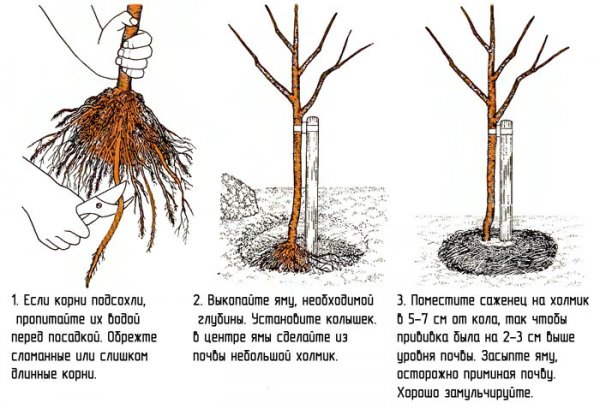
How to transplant plums in the fall
Plum transplanting is technically simple:
- Pit parameters. The size of the hole should be a couple of tens of centimeters wider and deeper than the earthen cone around the roots of the plum.
- Top dressing. The bottom of the pit is filled with compost.
- Installation. The plum is lowered into the pit, setting it so that the section of the "root collar", the place between the root and the trunk, is at ground level.
- Backfill. The plum falls asleep, filling the hole completely. Simultaneously with backfill, it is watered until the soil is moistened.
- Wind protection. The thin plum is strengthened by tying it to a strong stake.
- Mulching. The place under the drain is poured with soil and covered with a layer of ash mixed with peat or sawdust.
You can talk about the beneficial and taste properties of plums for a long time, these trees are found in many garden plots.
However, like any plant, agricultural technology has its own characteristics. Planting plums in autumn is the best option so that the tree takes root well and bears fruit abundantly. Why is it better to plant it during this period, how to prepare the site, than to feed it, how to prune and protect it from pests and diseases? It is important to understand these issues so as not to be mistaken with the variety and growing methods in a particular region.
There are often discussions about when is it better to plant plums in spring or autumn? In the autumn period, intensive sap flow stops. The seedling is in a semi-dormant state, so it tolerates the transplant better, gets used to the new place, and will not suffer immediately after the transplant from the sweltering summer heat. In the autumn period, it rains more often, so additional watering can be dispensed with.
Rational planting dates in autumn
When to plant the plants? It is important to plant before frost. For Central Russia, seedlings are placed in a new place at the end of September. In Siberia and the Urals, it is desirable to be in time in the first week of September.
If planting material bought late, it is better to dig a tree at an angle and transplant in the spring. In this case, intensive watering is required during the summer.
Varieties and their descriptions
For a long time, breeders have bred varieties with different terms ripening. Fruits differ in color, taste. Currently, the following varieties are popular:
| Varieties | Description |
|---|---|
| Greengage | Has large fruits yellow color, exquisite late ripening taste |
| July | High yield, large purple-red fruits, early fruiting |
| Zarechnaya early | Winter-hardy tree with early harvest, purple, oval-shaped fleshy fruits, ideal for homemade preparations |
| Souvenir of the east | A tree with juicy, dark red heart-shaped fruits, sweet mid-season |
| Golden ball | The plant has bright yellow fruits with a peach flavor with early fruiting, is top-tier in taste |
| Early | Begins fruiting 2 years after planting, reddish fruits ripen in early summer |
| Svetlana | The variety is suitable for northern regions, the fruits are not large, but with high taste. |
| Romain | Mid-season variety with red fruits and tasty pulp. |
Optimal growing conditions
After planting, the first 7 years of fruiting is weak, after 12 years the period of the highest yield begins. Based on this physiology, it is necessary not only to acquire, but also to create living conditions. The correct growth and acceleration of the onset of intensive fruiting depends on this.
Lowlands are not suitable for trees, in which they accumulate in spring and autumn cold air, it has a detrimental effect on plants. Nice place there will be a border of the site along the fence or next to the house, which will protect from the wind, but not in the shade. Drought has a bad effect on fruiting; during dry periods, watering is organized. The optimum pH of the earth is in the range of 6.4–7.2.
Plum is afraid of standing tall groundwater... Therefore, if they are at a depth of less than 1.5 meters, you can plant a plum in the fall on specially prepared high beds or organize the drainage of water from the site.
| Region | Recommendations |
|---|---|
| Moscow suburbs | Planting and care: if the winter is snowless, it is important to insulate the roots. To do this, in the fall, before frost, a mound is thrown around the trunk and covered with grass or sawdust. |
| Leningrad region | In areas with a high standing of groundwater, organize drainage: diversion ditches are dug around the perimeter. Be sure to mulch the tree trunk circle with peat or hay. |
| Middle lane | How to plant a plum in autumn in central Russia? For this, it is important to choose or create conditions for growth and reproduction: moisture, soil quality, security, and fight against pests and diseases. |
| Siberia | It is necessary to grow varieties that can withstand the harsh winter on the southern and southwestern slopes, protected from the wind. |
| Ural | In this region with frosty winters, it is necessary to choose zoned varieties, prepare the plant as described below. |
The correct choice of site and
soil preparation
The site must be protected from drafts: trees should be placed near fences or buildings. The soil should not be acidic and waterlogged. If the place does not correspond to the physiology of the plant, a special technology is used: high ridges are created, fertilizer is applied, protective shields are erected.
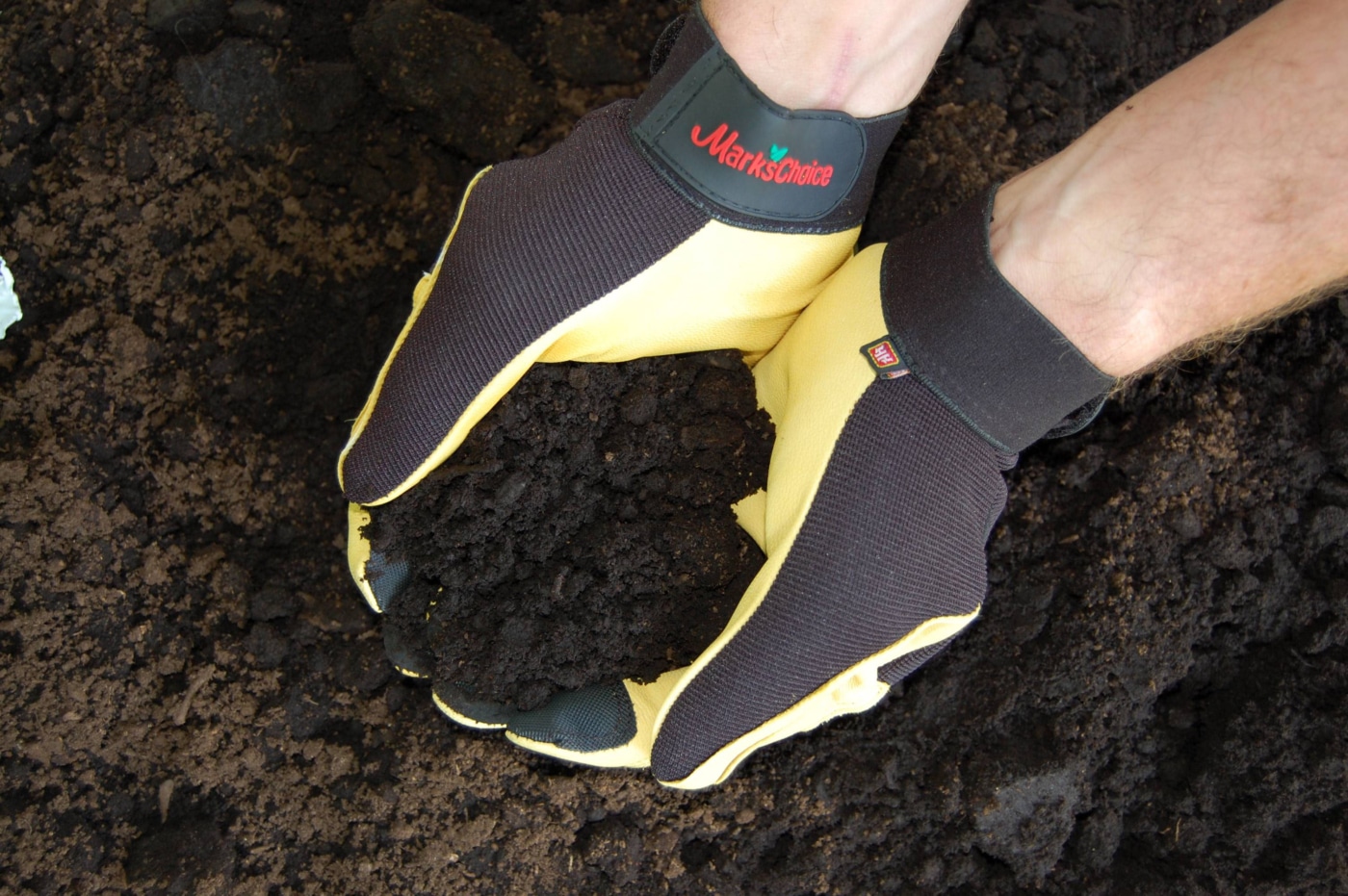
It is necessary not only to properly plant the plum in the fall, but also to prepare the soil. A mixture is required for each pit:
- top fertile soil;
- humus - about 15 kg;
- potassium salt not more than 15 g;
- superphosphate within 100 g.
Into the acidic earth they bring dolomite flour- 0.5 kg.
How to choose planting material
The best option for buying a tree is specialized nurseries that sell rootstock plants with grafted varietal cuttings. Such seedlings start flowering and fruiting earlier. Main settings:
- height up to 150 cm;
- trunk height to branches - 50-60 cm;
- age - about 2 years;
- trunk diameter at a height of 12 cm from the inoculation site - 1.5–1.8 cm;
- at least 5 roots 25–30 cm long.
Planting seedlings
A step-by-step guide designed by an experienced gardener:
it is necessary to properly prepare the soil in the garden. It is good to dig the ground not only at the site of the future pit, but also around it. Plum planting in autumn begins with choosing the optimal place, correct preparation land;
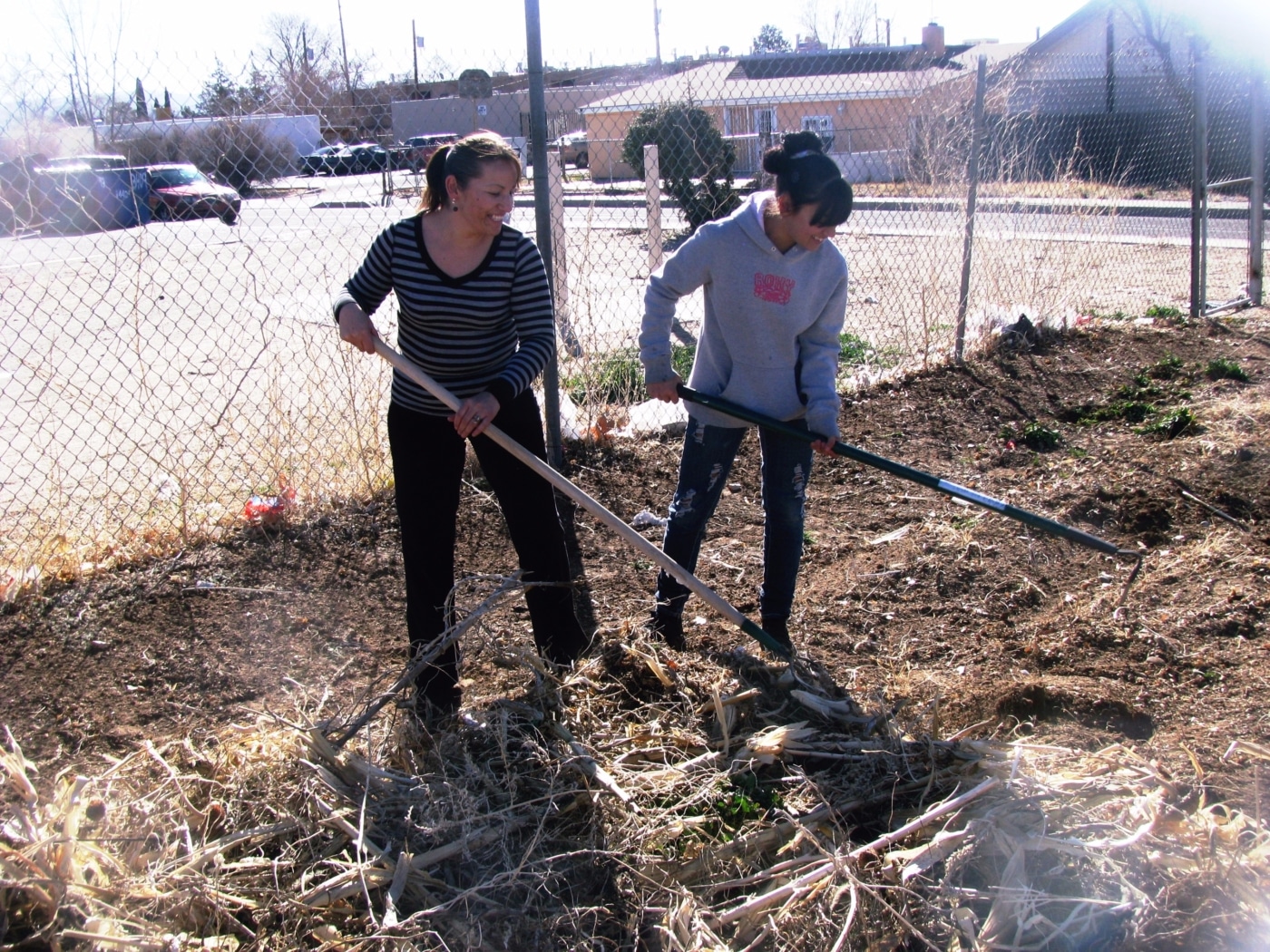
before you mark out the scheme for planting seedlings, you should take into account the size of an adult plant, what shape and height the crown will be. In any case, the distance should not be less than 3 meters from each other;
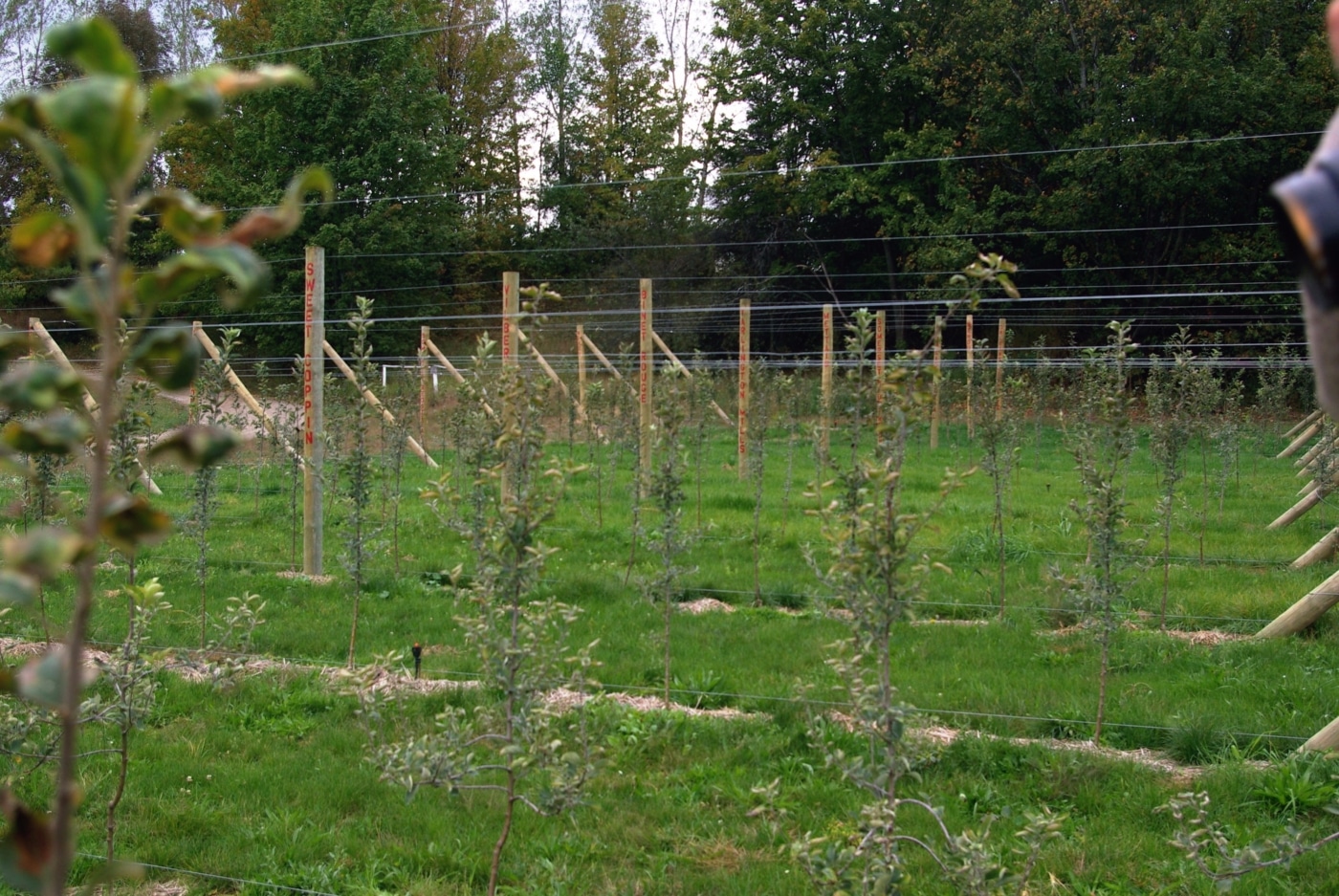
photo: © thefruitnut.files.wordpress.com
a planting hole is required with a diameter of at least 80 cm and a depth of 60 cm; it is dug two weeks before the planned planting. For better drainage sand is poured at the bottom. Fill with fertilized soil not completely. A peg is driven in the center of the hole, it is intended to become a support for a young plant;
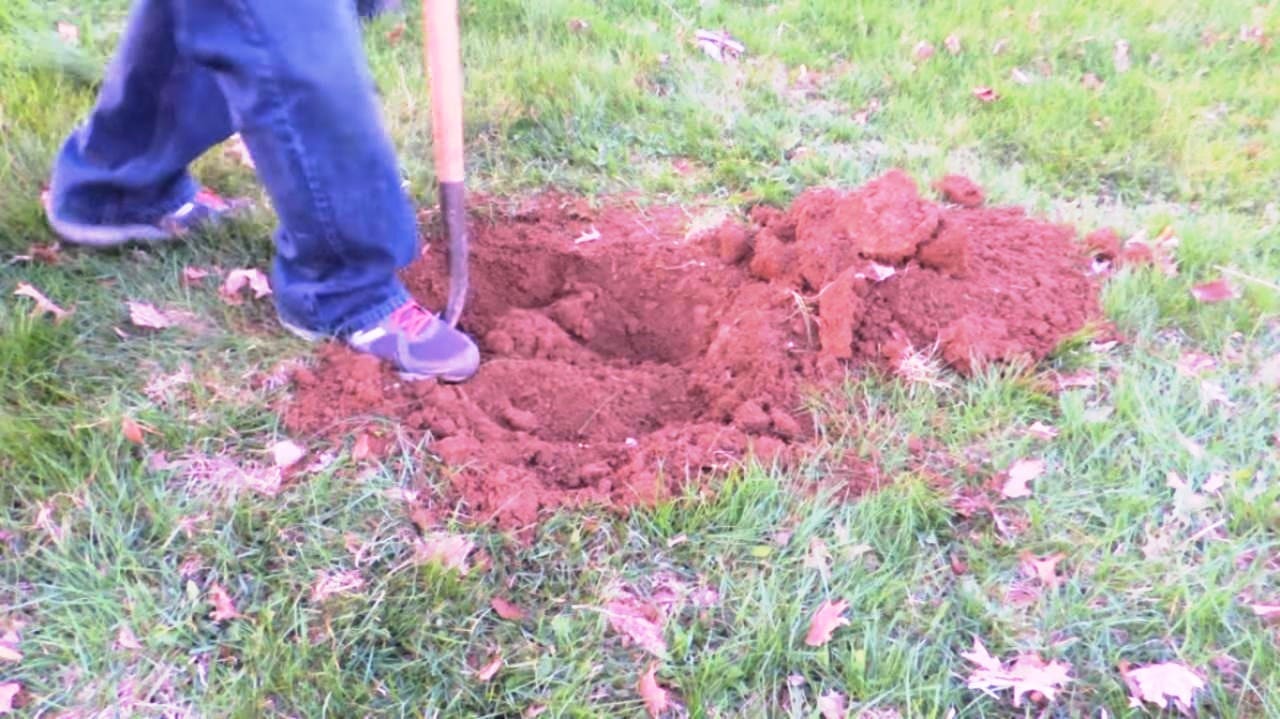
before planting, gardeners carefully examine the plant and prune bad roots;
![]()
photo: © richmondtreestewards.files.wordpress.com
place the seedling, straighten the roots, so that the root collar is located slightly above ground level (after watering, it will sit a little lower);

cover the roots with soil without fertilization, so as not to burn them, fill all the voids and gently trample. Then water, loosen the soil and mulch so that moisture is not lost.
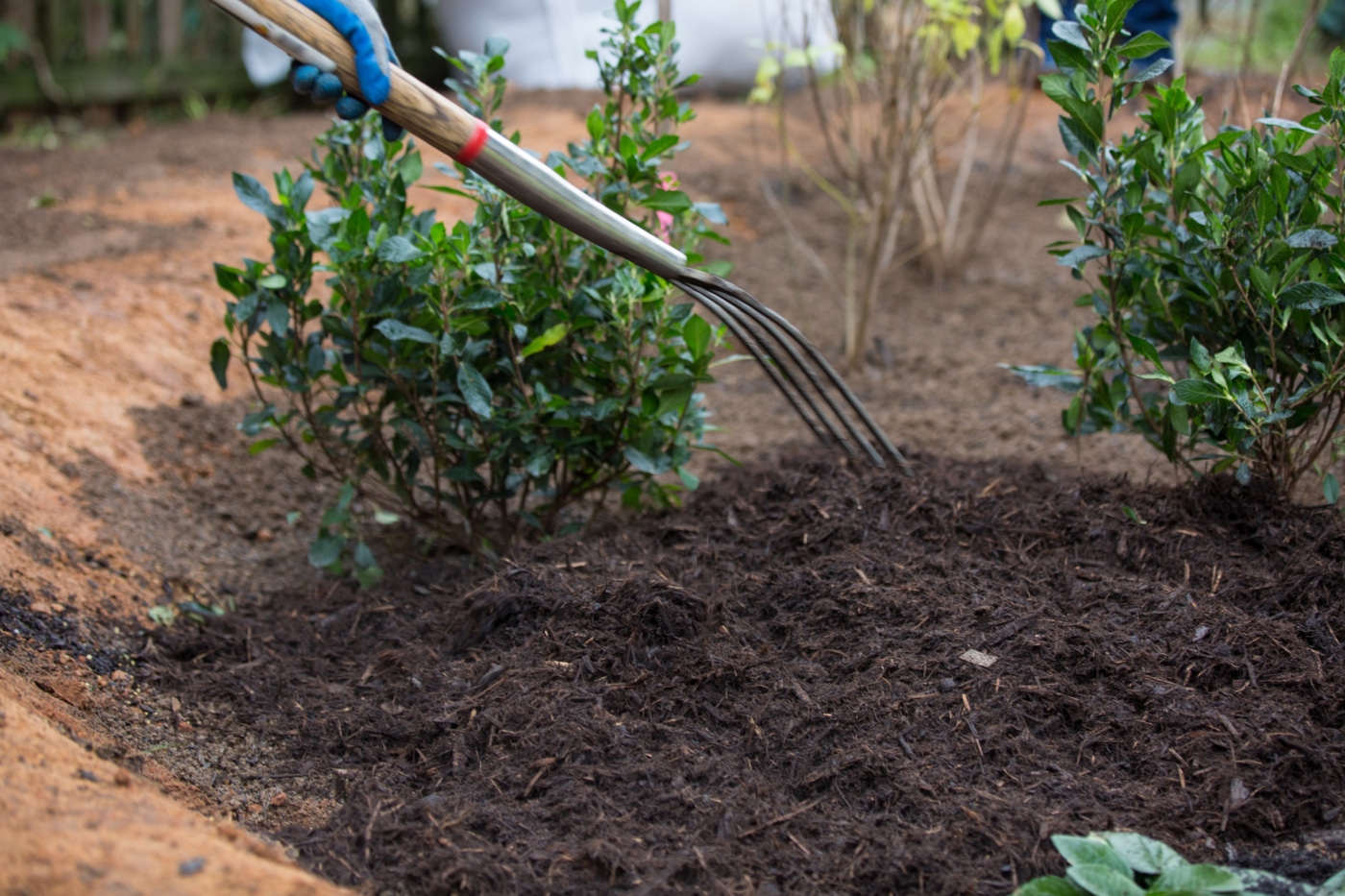
photo: © stormwater.allianceforthebay.org
After that, the question arises: caring for plums in the fall?
Care after landing
Planting and leaving in open ground includes timely feeding, pruning, watering and protection from pests and diseases. In the first year, you can do without fertilization. The plant will be in the spring and the whole summer season use the fertilizer applied before planting.
Pruning
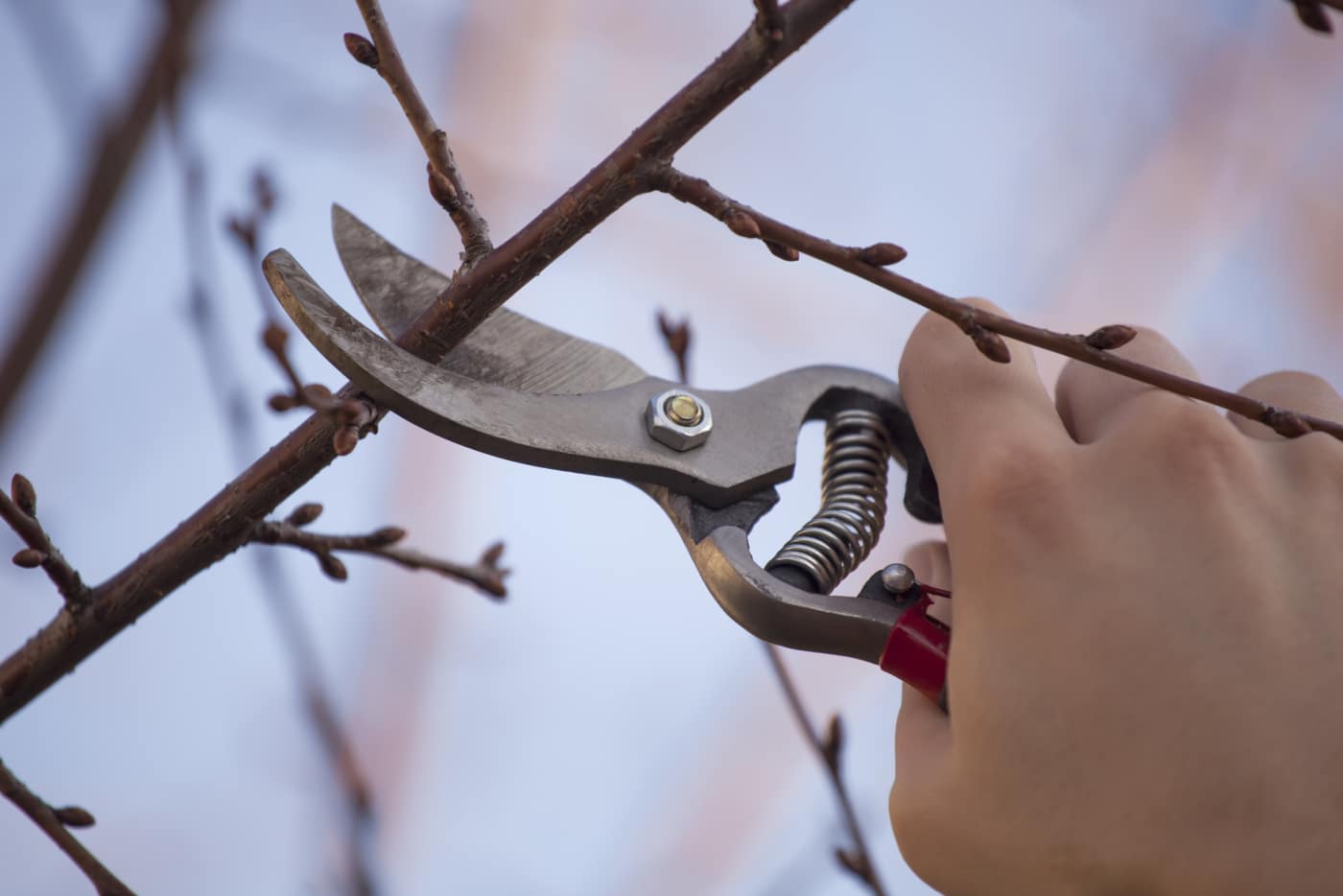
Pruning is carried out annually, which forms the crown. In April, in northern regions in May, a healing pruning is carried out. This is the best time for such work. Branches that grow inside the crown are removed, intersect with each other, shoots growing from the root. Shorten the upper branches to lower the crown. This improves growth, fruiting and further propagation by shoots.
Disease prevention
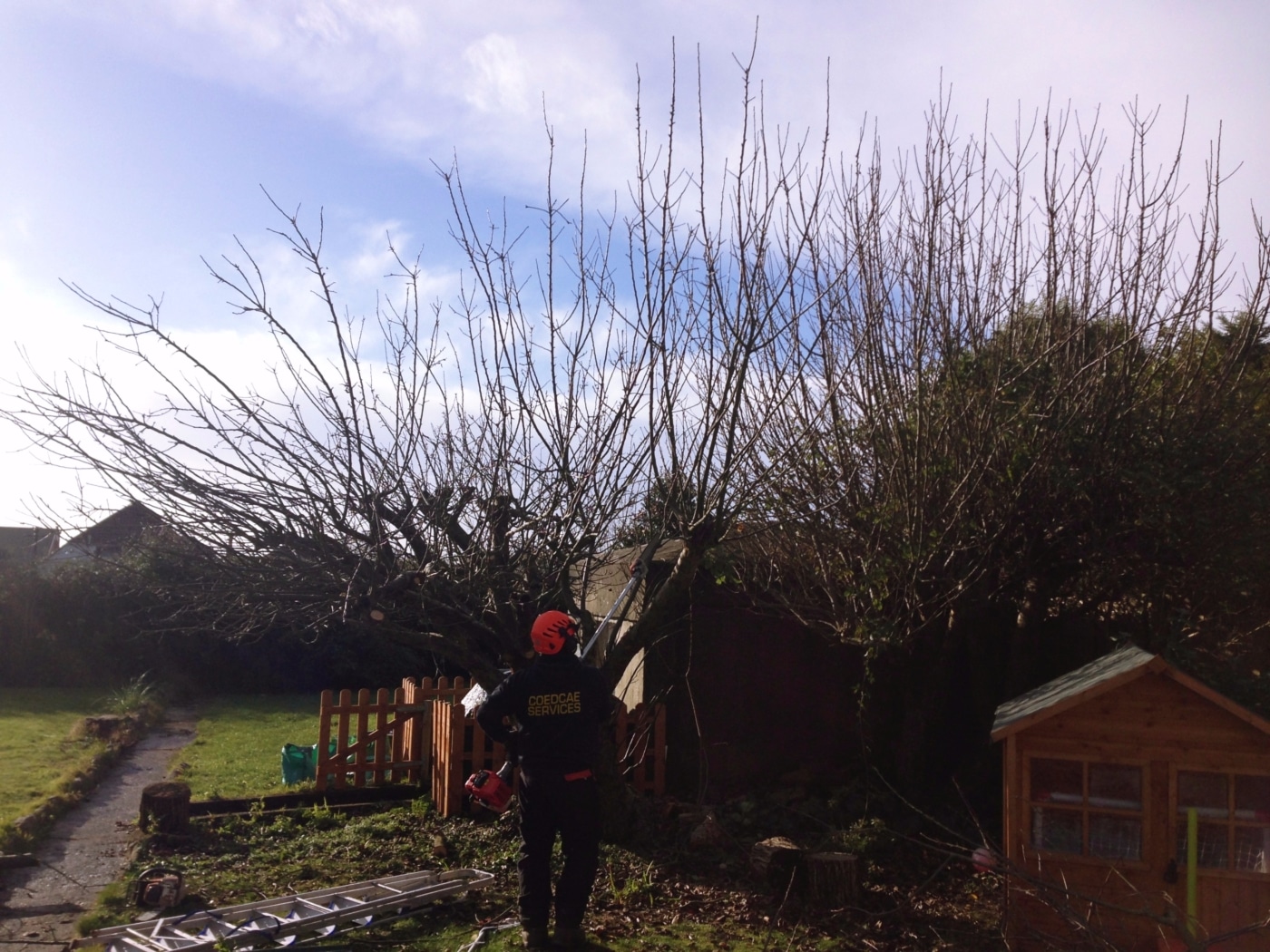
Gardeners get rid of gum and white rot by early pruning. Thinning the crown prevents perforated spotting. Treatment with Bordeaux liquid eliminates fruit rot, coccomycosis, curly leaves, bacterial spotting, moniliosis, this minimizes plum care in autumn.
Pest control

During the spring awakening of the plant, harmful insects appear. To protect the garden you need:
- plant healthy seedlings;
- cut off damaged branches;
- plant wormwood, marigolds under the crown;
- in the mornings, gardeners shake the sawer onto the litter;
- wood ash is added to the trunk circles, this will protect against aphids;
- after flowering, sprinkle with Inta-Vir (3 tablets per 10 liters of water);
- make trapping belts;
- cover up cracks and wounds on the trunk and branches;
- sprinkle with Insegar from the plum thickened.
Fertilizer
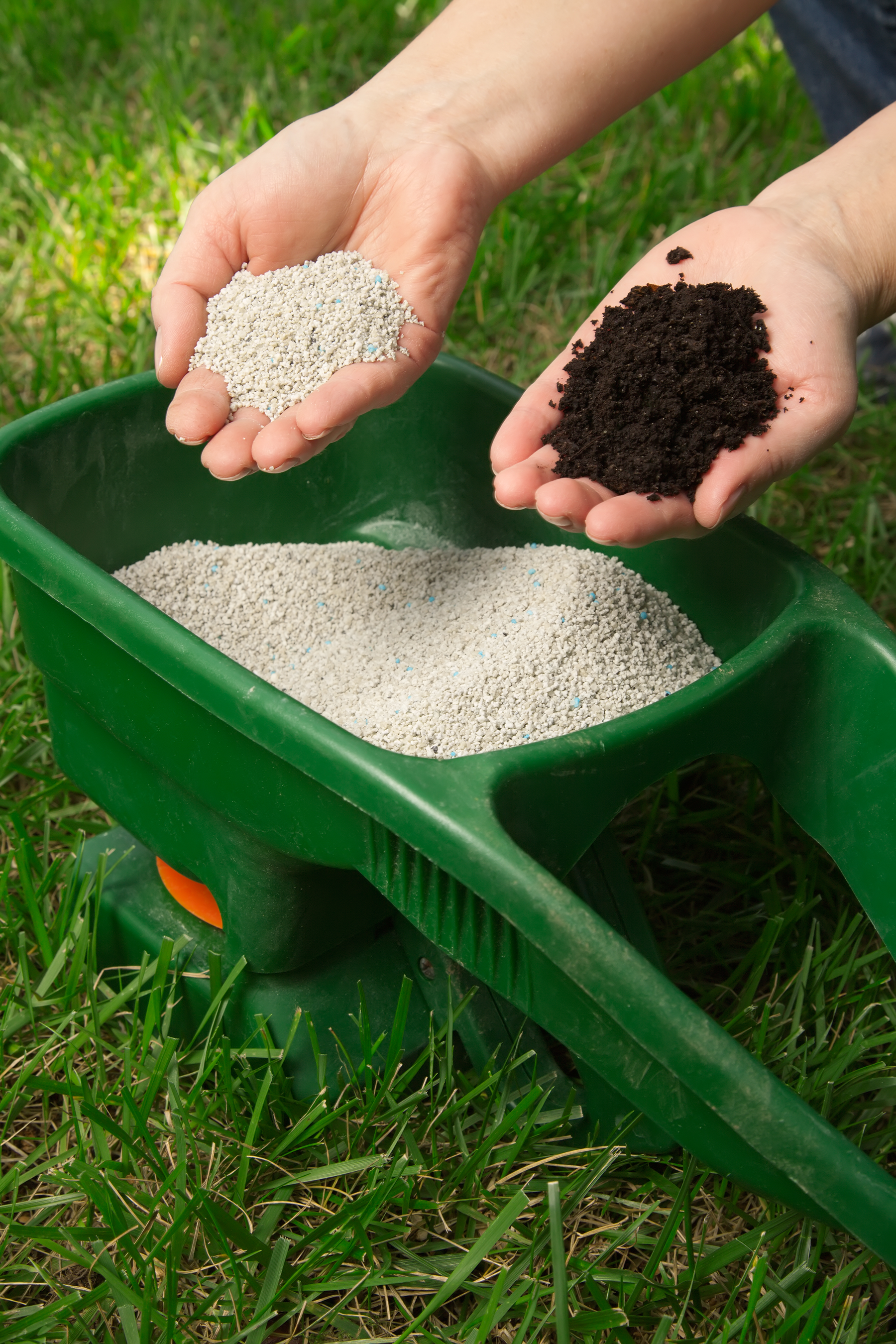
We figured out how to plant a plum in the fall, let's talk about top dressing. Fertilizer is applied annually, which includes ammonium sulfate. For acidic soil use ammonium nitrate. Trees cannot do without organic matter: you can use diluted in water cow dung in a ratio of 1:10. And also use humus for mulching, it improves the growth of both a seedling and an adult plum quite well. Annually held in spring foliar feeding 0.5% urea solution.
Watering
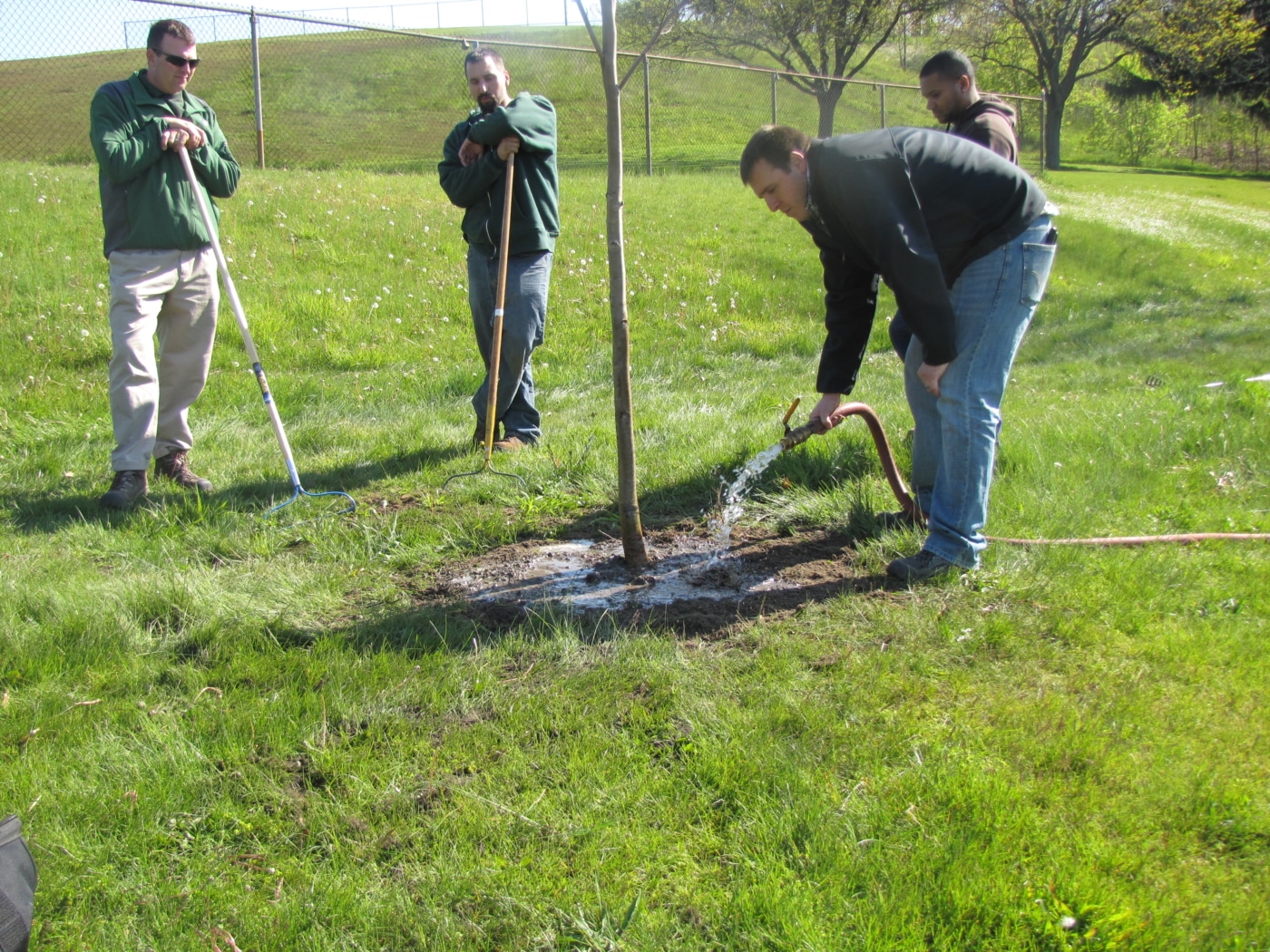
Planting plums in the fall includes watering: 2 buckets of water, but only if heavy rains are not expected. Plum does not like waterlogging. From spring and throughout the summer, it is important to organize timely watering.
Preparing for winter
The plant needs help to survive the winter, as the plum loves comfort:
- whitewash the trunk;
- dig in the trunk circle;
- tie the plant with burlap so that rodents do not damage;
- if forecasters promise a winter with little snow, they fall asleep with a thick layer of spruce paws, sawdust;
- peppermint is tied to the trunk and branches, which rodents do not like;
- the branches are tied together so that wet snow does not break them off.
Interesting! "For the Urals and Siberia, a shield shelter is being made in an open place for protection from the wind."
Video
In the video experienced gardener tells and shows in practice how to plant plums in the fall.
Despite the fact that the plum is a "characteristic" tree, it loves good feeding and watering, protected places, using the above tips, you can grow it even in difficult conditions of the North, the Urals.
Transplanting fruit trees is necessary for various reasons. Often it is necessary to re-plan the site and move the plantings to another place in order to free up space for construction. Sometimes it is necessary to transplant a fruiting tree with transportation from one garden to another. In any case, the question arises: how to transplant a plum in order to minimize trauma to the roots and ensure its quick survival in a new place?
Best time to transplant
You need to decide when you can transplant the plum. This is best done before the start of the active phase of the plant, that is in early spring before the start of sap flow or late autumn when the foliage is almost gone. Optimal time in the fall in the middle lane - until October 20, about 25-30 days remain before the onset of severe frosts.
Is it possible to transplant a plum in May? Transplant fruit trees late spring and in summer it is permissible only in the most extreme cases: in this year of fruiting one can not wait, and if the roots were seriously damaged, then next year the plant will recover and will not bear fruit.
Young trees no more than 4-5 years old are most suitable for transplanting, seedlings 1-2 years old are best suited for transplantation. Older trees have a branched root system, but they slowly grow young roots, and it will be difficult for the tree to settle down in a new place. An important condition increasing survival rate - transplanting together with an earthen lump, this allows you to save maximum amount roots.
Often on the forums, the question is asked whether it is possible to transplant plum shoots. If the tree has been grafted, then there is no point in replanting young shoots from the root system: the fruits on them will still be small and sour. If it was originally a tree good grade With large fruits, then the shoots can be separated from the root system and transplanted to a new place.
Plum transplant preparation
Pits for transplanting in the fall are prepared in about 20 days; for a spring transplant, they need to be dug out in the fall. The width of the hole should be about 80 cm wider than the earthen coma. So, to plant a 2-year-old seedling, you need to dig a hole 70x70 cm in size and about 70 cm deep.
A drainage layer of broken brick or expanded clay is poured onto the bottom - it will protect the roots from stagnant water, especially if the groundwater in the area lies close to the surface. In addition, a layer of compost is poured at the bottom of the pit, after which it must be sprinkled with a thin layer of earth so that the roots do not come into direct contact with the fertilizer.
The seedling must be properly prepared for extraction from the ground and transplanting. To do this, it is necessary to pour 4-5 buckets of water under the trunk, after which the seedling is carefully dug in around the circumference. It is necessary to carefully cut out a cone-shaped lump of earth with a depth of immersion of about 70 cm, after which it is carefully removed from the pit.
How to properly transplant plums in spring
Let's take a closer look at how to transplant a plum to a new place. The prepared seedling is delivered to the transplantation site with maximum preservation of the root system. If you need to transport a tree over a long distance, the roots are wrapped in several layers of matting or thick film for transportation big tree the roots are placed in a box made of planks.
Transplantation into a prepared pit is carried out as follows:
- The roots must be inspected before planting. Sick, rotten damaged roots are cut off with pruning shears, the cut is sprinkled wood ash... If the roots dry up during transportation, they need to be well moistened with water, this will improve the survival rate of the tree.
- The root system, together with an earthen lump, is placed in a hole so that the root collar (the area between the root of the tree and its trunk) is flush with the ground.
- The pit is filled with nutritious garden soil... At the same time, it is watered, it is necessary to thoroughly moisten the soil.
- The planting site must be mulched to protect the root system. For this, the space around the trunk is covered with a layer of earth, peat and sawdust.
Mulching is especially important when autumn transplant, it allows you to protect the roots from freezing in winter. In regions with a relatively warm climate, a winter transplant is sometimes used: a lump of frozen earth is cut out along with the root system and installed in a new place. After thawing and the beginning of sap flow, the tree can begin to bear fruit next summer.
When planting a young seedling, you need to provide him reliable support for growth. To do this, a stake is driven into the hole on the north side of the trunk, to which the plant must be tied.
Transplanted plum care
When deciding when to transplant a plum - in the fall or spring, you need to take care of creating comfortable conditions for young or adult trees. Plum is a moisture-loving and heat-loving plant; when planted in the shade, the yield is significantly reduced. When deciding where and when the plum can be transplanted, it is necessary to take into account the composition of the soil. Plum does not like places with dense soil in which moisture stagnates, it is advisable to find for it a site with loose soil well-lit by the sun.
In the first years after planting, the branches of a young tree grow unevenly, so they need to be pruned regularly to form correct crown... In the first year after transplanting, fertilizing under the roots is not required, a layer of compost placed under the root system during planting is sufficient. In the third year, potash and phosphate fertilizers autumn and nitrogen fertilizers in the spring for the growth of green mass.
If the soil is too acidic, ash or dolomite flour is added to it. Active watering is necessary in the first half of summer; each tree needs at least 5 buckets of water. If the year turned out to be fruitful, it is imperative to install supports under the branches of the plum so that they do not break.
Knowing how to transplant plums correctly, you can ensure a good harvest in the next year after moving to a new place. The plant will quickly restore the root system and delight the owner with abundant fruiting.
Plum is a moisture-loving tree; loves bright lighting and protection from northern winds; does not like soils with a high occurrence of groundwater. The roots are horizontal, they grow at a depth of 20 - 50 cm, only some of them go deeper. In adults, plums, the roots extend beyond the perimeter of the crown by 1 - 1.5 m - this must be taken into account when transplanting: digging out damages most of the root system. This leads to homoza - a disease when cracks form on the trunk with flowing gum (resin). Transplanted plums older than 4 - 5 years old do not take root well and get sick for a long time, so it is inappropriate to move them.
The optimal time for transplanting plums is early spring, when the buds have not yet begun to swell, or autumn, from mid-September to October 20 (for middle lane Russia - in other regions, the timing of the transplant is shifted in accordance with climatic conditions).
Planting pits for spring planting prepared in autumn, for autumn - 15 - 20 days before work. The size of the hole is 60 - 80 cm larger than the root ball of the tree. For a 2-year-old seedling, a hole of 70x70x70 cm of any shape is sufficient. When digging upper layer lands are thrown aside; the bottom of the pit is loosened with a bayonet.
With a close occurrence of groundwater at the bottom of the pit, drainage is made from broken brick, expanded clay, stones. Then the top layer of soil is poured, 1 - 2 buckets of humus, 1 kg of ash, everything is mixed and filled with two buckets of water.
Sometimes the grown-up is transplanted to a new place root growth... If mature tree was vaccinated, then the work will not be justified: berries on young tree can be fine and sour. But if the mother tree was also grown from the undergrowth, and the quality of its fruits is decent, then it makes sense to dig out the seedling. In dry weather, its near-stem circle is well watered, dug in at a distance of 40 cm from the stem, trying to damage the roots as little as possible. The dug out seedling is placed with roots on cellophane and well packaged if transportation is required.
It is best to buy a one-year-old seedling with a closed root system in the nursery. But seedlings with an open root system take root pretty well if their roots have been carefully packed and not dried out. Before planting, their roots must be carefully examined: rotten and diseased roots are cut off. For a while, the seedling can be placed in a bucket of water.
When transplanting a plum with an open root system, soil is poured into the hole so that a small cone turns out in the middle. A stake is driven into the middle of the pit; a seedling is placed on the north side of it. It is more convenient to carry out the work together, so that one person holds the seedling, and the second can gently spread its roots along the surface of the earthen cone so that they are not bent, and fill it with soil. The root collar of the plum should be 5 - 7 cm above the upper edge of the pit. While adding soil, the seedling is slightly shaken so that all the gaps between the roots are filled. The earth is carefully trampled: at the edges of the pit it is denser, at the trunk it is lighter.
When transplanting a specimen with a closed root system, peat, humus, fertilizers and fertile soil are poured onto the bottom of the pit, on top of the drainage. Everything is mixed, rammed and watered. A seedling is placed on top so that the root collar is slightly above the soil surface. The gaps between the edges of the pit and the earthen lump are covered with fertile soil and trampled. A peg is driven in along the edge of the pit.
They cover the seedling with a string, overlap it with a figure eight and tie it to a peg. A hole is made along the edges of the planting pit and 1 - 2 buckets of water with "Kornevin" are poured into it. The trunk circle is covered with a thick layer of humus or peat. After transplanting, the plum is watered weekly with fertilizers that stimulate root formation. In the spring, the seedling is cut to a height of 1.5 meters. In order for the plum to bear fruit abundantly, at least two trees are planted at the same time.
A plum of 4 - 5 years old, a year before the transplant, 70 cm from the trunk, in a circle, is dug in with a groove 50 cm deep; the roots are cut off. The groove is filled with humus, sand, peat with the addition of ash; compacted and watered abundantly. Water several times over the summer; many suction roots grow on the cut roots.
A year later, the plum is dug in again along the outer edge of the previously dug groove, trying to preserve the young roots. Gradually they deepen, chopping off the remaining roots and forming an earthen lump 70 cm thick. The tree is tilted and burlap is brought under it, then it is transferred onto the laid material. The roots are wrapped so that the earth does not crumble.
Before planting, measure the depth of the planting hole to match the thickness of the root ball. The plum can be lowered into the pit directly with jute burlap - it will gradually decompose in the ground. The pit is covered with soil, trampled down and 3 - 4 colas are driven into it, to which the plum is attached on the stretch marks. The stem and the base of the skeletal branches are wrapped in moss or burlap, which are moistened with water for 2 - 3 weeks. The transplanted tree is regularly watered with Kornevin. In the spring, the conductor is trimmed by a third of the length and 2 - 3-year increments. At good care plum can begin to bear fruit as early as next year.
Instructions
A tree can only be transplanted within a strictly defined time frame. Prepare the tree and planting hole in advance. The most best time for this work is the end of November - the beginning of December. Optimum temperature for transplant - minus 2-3 degrees. You can also plant the tree in early spring when the ground is still frozen.
A fruiting tree, which is 7-10 years old, must be transplanted with a clod of earth. It should have a diameter of about 100 cm and a height of 70 cm. The roots that go beyond these boundaries must be chopped off with a sharp ax. They are often sawed off with a hacksaw. Be sure to clean all the ends of the roots with a sharp knife. Teach, the crown of a tree can only be cut in the spring, before the buds swell. The term of the transplant does not affect this.
Plum, which is more than 5 years old, must be transplanted especially carefully. First, you need to dig grooves on three sides 50 cm from the trunk. Their length should be at least 60 cm, and their depth - at least 50 cm. Fill the holes with a loose nutrient mixture. It should consist of 40% rotted manure, 20% sand and 35-40% of the soil of the upper fertile layer. Manure and organic residues will rot over time, while releasing gases. Many tiny holes will be formed upon reaching the surface. This will provide an oxygen pathway to the roots. This will have a beneficial effect on the survival rate of the transplanted tree. Tamp the grooves well and fill with water. It is recommended to tie the base of the branches with burlap. This harness needs to be moistened with water for about a month.
During a year plum water regularly and protect from pests. A year will be enough for a powerful beard of small suction roots to grow on the cut roots. By the end of August, when the growth of shoots will be stopped, it is necessary to trim the crown.
A tree transplant may be necessary in the event of a new building in its place, expansion of a recreation area or a playground. To successfully transplant a large tree, you need to know important details of this work.
You will need
- Sturdy shovel, pruning shears, clay, charcoal, fertilizer, water.
Instructions
The transplant is normally tolerated by coniferous trees. For example, pine, thuja, fir, spruce and many others. When transplanting, the tree will have to be dug up along with the roots. Note that some trees develop roots that extend far out to the sides. If disturbed, the tree can then be very sore. Before replanting, dig a trench 30 cm wide and at least 60 cm deep around the tree. Cut the roots in the trench with a sharp device or cut with a pruner. After that, sprinkle the roots with charcoal or cover with garden putty, clay. Loosen the trunk circle and add fertilizer. The tree is now ready for replanting.
Choose a place to transfer. It should be comfortable for the tree: in the shade or in the sun, with moist or, conversely, arid soil. Prepare the planting hole 15 days before transplanting. When digging a hole, pay attention to the condition of the soil. If it is severely depleted, replace it with a fertile one. Average planting pit depth: 1 meter. Deeper deepening is not desirable, since root system from this it can rot. Determine the width of the hole by the width of the earthen clod on the roots. Before transplanting, add humus to the bottom of the planting pit.
Start planting a tree: insert a sturdy shovel into the dug trench and try to push it under the roots. If that doesn't work, remove more soil from both sides of the plant. Try again to loosen the roots' grip on the soil. When you see that the roots are free, move the tree onto the burlap nearby. Tie burlap around the tree to keep the roots of the earth lumpy. Now it is advisable to moisten the burlap with water.
Grasping the edge of the burlap, transport the tree to the new hole. Untie the burlap and set the tree firmly in the earthen hole. Cover the hole with prepared soil and compact it well so that no voids remain inside. Then water the tree and tamp it down again. If there are air pockets in the soil, the tree can easily budge. One bucket will be enough for watering. Then water the tree every three days for 1.5 months. Place the mulch in a circle near the trunk to keep the soil moist for a long time.
Deciduous tree replant in early spring as soon as the snow melts. The transplant is well tolerated by mountain ash, horse chestnut, bird cherry, apple, irga, plum, quince, pear and many others. To prevent the bark of the transplanted tree from drying out, tie moss, birch bark, rags, a layer of straw or cardboard to it. In the spring, be sure to shorten all unnecessary branches of a previously transplanted tree. If it is possible to shade the tree after transplanting, be sure to do it. So the root system will recover faster and come in line with the aboveground part of the tree. Also, after transplantation, additional watering is recommended with root formation stimulants - "Heteroauxin", "Kornevin" and others.
note
Before digging out the tree, mark the side of the plant that faces north. And when transplanting, plant the plant in the same spatial arrangement.
If you are replanting a plant from a forest, grab a couple of buckets of soil and mix it with your vegetable garden.
Plum is one of the favorites fruit crops gardeners. Its varieties differ in the shape of the fruit. Elongated oval fruits are found in Hungarians, and spherical fruits are found in Renklods. However, the planted trees may not bear fruit or die. The reason for this often lies in the wrong planting of seedlings, and the plum is very demanding on growing conditions.
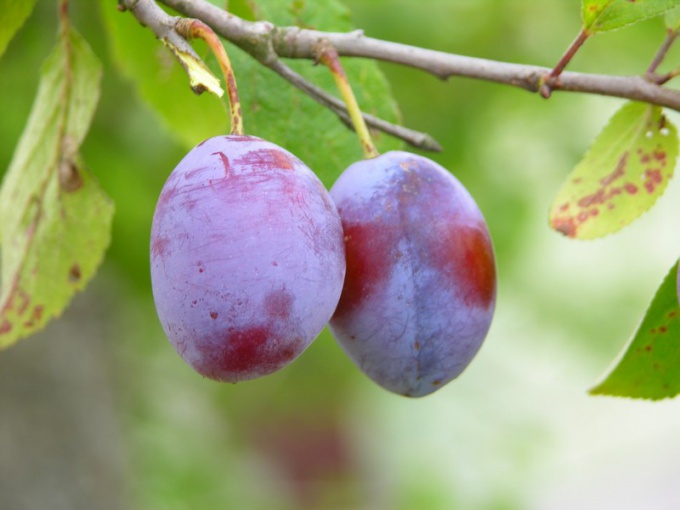
You will need
- - seedlings;
- - stakes or wire;
- - garden tools;
- - tags indicating the grade.
Instructions
Choose a place for the seedling on the site. Plum prefers moisture-retaining, well-drained soil with a pH of 6.5-7.2. Plum tree does not like winds, and in low places flower buds can be damaged by frost. Find a warm, well-lit area. It is good if the drain is protected from the wind by the wall of the house or by a fence.
Plum planting is mainly done in autumn or spring (closed-root plants can be planted in summer). Prepare the soil. Delete perennial weeds and add mineral and organic fertilizers... In open areas, provide planting stakes, and if you plan to form trees in a fan shape, then pull the wire system.
Find a good planting material. Remember for better survival rate the seedling must meet certain requirements: the length of the roots is at least 30 cm, there should be no cancerous growths on the roots and trunk, without sagging at the grafting site. The length of the trunk is at least 60 cm, the thickness of the trunk is 2-2.5 cm.
Dig a planting hole wide and deep enough to accommodate the spread roots of the seedling. For draining, a 40x60 cm pit is enough. Separately fold the fertile top layer of the earth. On the other side, remove the lower less fertile soil layer. Arrange a drain at the bottom of the pit.
Examine the roots of the plum. Cut off all broken, crushed and peeled ends with a sharp knife or pruner. Carefully place the seedling on a mound poured into the hole fertile land... Gradually add soil to the roots. Try to let the soil wake up between the roots and evenly fill all the gaps. The tree will take root much worse if there are voids between the roots.
The root collar of the tree (where the trunk transitions to the roots) should not be underground. To do this, place the seedling a little higher than necessary. Over time, the soil will settle, and the root collar will be in place. Tie up plum to a stake or to a wire. Water the tree liberally.
It is necessary to place seedlings in a row, at least 3-4 m from each other. Keep tree trunks clean. The land under the seedlings can be mulched. If you plan to have a turf garden, mow the grass regularly.
note
Remember to loosen the ground around the drains with care, because the root system of trees is very close to the surface.
Useful advice
Be sure to hang tags on the seedlings indicating the variety and date of planting.
Sources:
- how to plant a plum in autumn 2017
To refresh the water in aquarium, it is not enough just to drain the old one and pour fresh from the tap. Over time, a special microclimate is formed in the container, due to a sharp change in which the fish can get sick or die. If you do not want to harm those who have been so diligently raised, follow a certain sequence of actions when draining and filling the aquarium.


